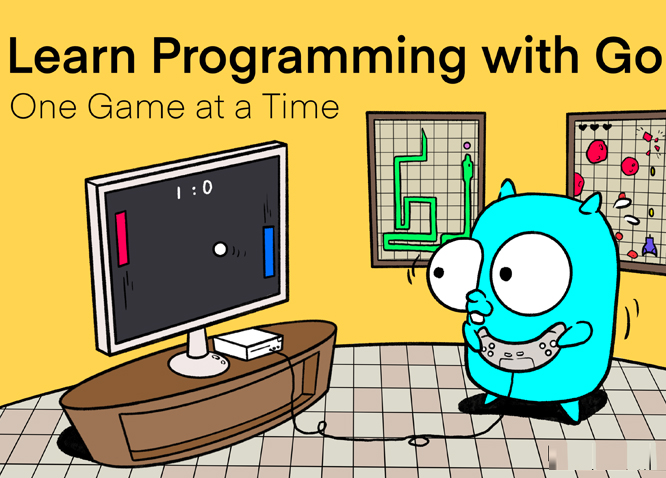Introduction:
Overview of Go Programming Language
Introduce Go (also known as Golang), a statically typed, compiled language designed by Google.
Highlight its key features: simplicity, concurrency support, fast performance, and suitability for building scalable, high-performance systems.
Mention industries that use Go (e.g., cloud computing, networking tools, microservices, etc.).
Why Learn Go?
Explain the growing demand for Go developers.
Benefits: ease of use, minimalistic syntax, strong standard library, and excellent concurrency model with goroutines and channels.
Course Content Outline
Module 1: Introduction to Go Programming
Lesson 1.1: Setting up Go
Install Go on different operating systems (Windows, macOS, Linux).
Configure the workspace and GOPATH.
Run a “Hello, World!” program in Go.
Lesson 1.2: Basic Syntax and Structure
Basic syntax: Functions, variables, constants, and data types.
Control flow: if, else, switch, and for loops.
Understanding the main function and the Go runtime.
Module 2: Working with Data Types
Lesson 2.1: Variables and Constants
Declaring variables using var, shorthand (:=), and constants (const).
Data types: int, float, string, bool, etc.
Lesson 2.2: Arrays and Slices
Difference between arrays and slices.
How to work with slices, append, and copy data.
Lesson 2.3: Maps and Structs
Creating and accessing maps.
Structs for creating custom data types.
Module 3: Functions and Methods
Lesson 3.1: Defining Functions
Function syntax: return types, parameters, and variadic functions.
Scope and closures in Go.
Lesson 3.2: Methods and Interfaces
Methods on structs: defining methods and accessing them.
Understanding interfaces: dynamic typing and polymorphism.
Module 4: Error Handling and Testing
Lesson 4.1: Error Handling in Go
Understanding Go’s approach to error handling (returning errors vs exceptions).
Best practices for error handling.
Lesson 4.2: Writing Tests in Go
Introduction to Go’s testing framework.
Writing unit tests with testing package.
Table-driven tests and best practices.
Module 5: Concurrency in Go
Lesson 5.1: Goroutines
Introduction to concurrency in Go with goroutines.
Creating and running goroutines.
Lesson 5.2: Channels
Understanding Go’s channel-based concurrency model.
Using channels for communication between goroutines.
Lesson 5.3: Select Statement
How to manage multiple channels using the select statement.
Module 6: Advanced Go Concepts
Lesson 6.1: Reflection in Go
How Go’s reflection works and common use cases.
Lesson 6.2: Generics in Go (Introduced in Go 1.18)
Understanding type parameters and how to use generics.
Lesson 6.3: Go Routines and Worker Pools
Creating a worker pool to manage concurrency and parallelism.
Module 7: Building Applications in Go
Lesson 7.1: Building a REST API with Go
Using Go’s net/http package to create a simple REST API.
Handling HTTP requests, routes, and JSON responses.
Lesson 7.2: Web Frameworks in Go
Overview of popular Go web frameworks (e.g., Gin, Echo).
Using these frameworks to simplify building scalable APIs.
Lesson 7.3: Database Interaction
Using Go’s database/sql package to interact with relational databases (MySQL, PostgreSQL).
ORM options in Go (e.g., GORM).
Module 8: Performance Optimization and Best Practices
Lesson 8.1: Profiling and Benchmarking
Using Go’s built-in profiling tools (e.g., pprof).
Benchmarking functions and code blocks.
Lesson 8.2: Memory Management
Understanding Go’s garbage collector and memory management.
Lesson 8.3: Best Practices for Writing Efficient Go Code
Code organization, Go idioms, and optimizing performance.
Conclusion:
Final Project and Certification
Encourage learners to apply their knowledge by building a final project (e.g., a web application, a CLI tool, or a REST API).
Optionally, provide a certification after course completion or a recommendation for further study.
Next Steps
Suggest advanced topics or additional resources (books, websites, GitHub repos, etc.).
Mention the Go community and how learners can engage with it through forums, events, and contributing to open-source projects.
Additional Tips for Writing the Blog:
Be Interactive: Link to resources like documentation, GitHub repositories, and code samples.
Include Code Snippets: For each topic or lesson, try to include example code with explanations.
Highlight Key Concepts: Use headings and subheadings to break down the content and make it easy to digest.
Provide Resources: Offer links to Go’s official documentation, external tutorials, or video content that can enhance learning.
SEO Considerations: Use keywords like “Go programming,” “learn Go,” “Go course,” and “Go tutorials” to help your blog rank higher on search engines.


